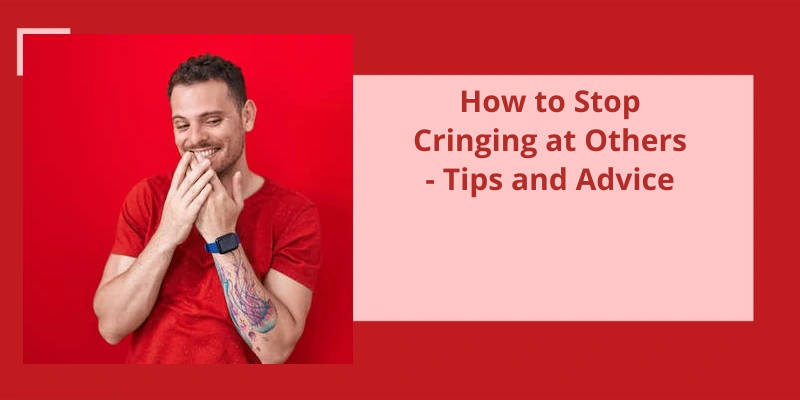However, while there's nothing inherently wrong with smiling, telling someone to do so can be seen as rude and inappropriate. Many people feel uncomfortable or even angry when told to put on a happy face, as it can come across as insincere or patronizing. According to Helen Fisher, a biological anthropologist, being told to do anything can be off-putting, especially if it goes against your natural tendencies. This raises an important question: is it rude for someone to tell you to smile? Let's explore this topic in more detail and try to understand why some people find it offensive.
Why Is It Wrong to Tell Someone to Smile?
It’s important to recognize that a persons emotions are complex and multifaceted. Asking someone to smile overlooks this fact and simplifies their experiences into something easily digestible for the person making the request. It’s disrespectful to disregard a persons emotional state in this way, as it implies that their feelings don’t matter. This can lead to feelings of invalidation and resentment, particularly if the person being told to smile is already struggling with issues like anxiety, depression, or trauma.
Society often places a high value on positivity and optimism, and expects people to present themselves in a certain way to the public. This can be particularly challenging for women and femmes, who’re often held to higher standards and subjected to more scrutiny than their male counterparts. Asking someone to smile reinforces harmful gender roles and pressures, and can reinforce the idea that emotions like sadness or anger are unacceptable or less valuable than happiness.
It’s important to recognize that telling someone to smile isn’t a harmless gesture. It can be incredibly intrusive, disrespectful, and harmful, particularly when it comes to respecting other peoples privacy and personal space. It’s important to be mindful of boundaries and recognize that everyone has the right to experience and express their emotions in their own way. So next time you feel the urge to tell someone to smile, take a deep breath and remember that it’s not your place to dictate how someone else feels or presents themselves to the world.
The Power Dynamics at Play When Someone Tells Another Person to Smile
- The person telling someone to smile may be assuming power over the other person’s emotions and appearance.
- There may be a gendered aspect to this power dynamic, as men are often the ones telling women to smile.
- The expectation for women to smile can also be related to societal expectations for them to prioritize the comfort and happiness of others over their own feelings.
- Telling someone to smile can be dismissive of the other person’s emotions and experiences.
- It’s important to consider the power dynamics at play and respect the autonomy and feelings of others.
Moreover, maintaining a friendly and positive demeanor is key to building and maintaining rapport with anyone, not just women. This is why many people wonder whether they should smile while talking to a girl, as it can have a significant impact on the outcome of the conversation. However, there’s more to it than just flashing a grin – read on to learn more.
Should You Smile While Talking to a Girl?
However, the timing of the smile is also important. If you smile too much or for no apparent reason, you might come across as inauthentic or creepy. Make sure that your smile is natural and appropriate to the situation. For example, if the girl is telling a sad story, a big grin might not be the best response.
Furthermore, the type of smile matters as well. A genuine smile that involves the eyes (known as a Duchenne smile) is more effective than a smirk or half-smile. This type of smile conveys warmth and sincerity, which is important when trying to form a genuine connection with someone.
In addition, it’s worth noting that your body language should match your smile. If youre standing with crossed arms or a stiff posture, your smile may not come across as genuine. On the other hand, if youre relaxed and open, a smile can enhance the positive energy that youre radiating.
Ultimately, whether or not to smile while talking to a girl depends on the situation and your personality. If youre a naturally cheerful person, smiling can be a great way to put others at ease and show that youre friendly. However, if youre shy or introverted, you may be more comfortable with a more reserved approach. Listen to your instincts and do what feels most natural to you.
Smiling can invite someone in, break the ice and even make us seem more attractive and approachable.
The Science of Smiling and It’s Effects on Our Mood
- Smiling activates the release of endorphins, which are natural painkillers and mood elevators.
- Studies have shown that the act of smiling, even if forced, can lead to increased feelings of happiness and decreased feelings of stress.
- Smiling can also improve our social interactions, making us more approachable, trustworthy, and likable.
- Researchers believe that the act of smiling may even have benefits to our physical health, such as boosting our immune system and reducing inflammation in the body.
- In addition to the benefits for ourselves, smiling can also have a positive impact on those around us, improving our relationships and creating a more positive atmosphere.
While some individuals have a bright, friendly smile that comes naturally, others are often criticized for not smiling or appearing unfriendly. However, there are various reasons why people may choose not to smile, ranging from personal preferences to cultural and societal norms. Understanding these factors is vital in appreciating people’s varied perspectives and personalities.
Why Do People Say I Don’t Smile?
Others may find that smiling too much doesn’t feel natural or even uncomfortable. Therefore, it isnt because these individuals are unhappy or unfriendly; instead, their facial expressions merely reflect their personal preferences.
Resting Bitch Face – Theres a well-known phenomena called Resting Bitch Face (RBF), where individuals appear to be in a bad mood or unapproachable, even when they’re not. This condition is generally hereditary, and many people possess this facial feature from a young age. Unfortunately, even in the absence of any negative feelings or hostility, individuals with RBF are often perceived wrongly by others, leading to misunderstandings.
Social Anxiety – It’s not uncommon for individuals with social anxiety to find it challenging to smile. They may feel self-conscious and uncomfortable, believing that people may judge them based on their facial expressions. Even if they do smile or laugh, they may still feel uneasy and worried about how they appear to others.
Mental Health – Unsurprisingly, not smiling can be a sign of depression and other mental health conditions. People who struggle with mental health issues may find it difficult to find happiness in daily activities, leading to a lack of smiles and overall facial expression.
Conditions such as migraines, bruxism (teeth grinding), and temporomandibular joint (TMJ) disorder can all lead to facial pain and make it challenging to smile.
Cultural Differences in Smiling: In Some Cultures, Smiling Is Not as Common or May Be Perceived Differently Than in Others, Leading to Misunderstandings or Misinterpretations.
Cultural norms regarding smiling vary and can cause confusion or miscommunication in cross-cultural interactions.
In addition to it’s social benefits, smiling can also have a positive impact on your own mood and well-being. Research has shown that the act of smiling can actually trigger the release of feel-good hormones in the brain, such as endorphins and serotonin. So not only does smiling make you more likable to others, it can also make you feel happier and more relaxed in your own skin.
Why Do People Say You Should Smile More?
In addition, smiling has been shown to have a positive impact on our own mood and mental wellbeing. This is because the act of smiling sends signals to the brain which trigger the release of endorphins, which are natural mood-boosters.
Another reason why people say you should smile more is that it can help to improve your relationships with others. When we smile at someone, it makes them feel good and appreciated. This can help to establish a positive connection between us, leading to stronger and more meaningful relationships.
So if youre looking to make a positive impression on others and boost your own happiness and wellbeing, try smiling more often – it might just make all the difference!
The Cultural Significance of Smiling in Different Parts of the World
Humans smile across cultures. A smile can convey happiness, friendliness, or even agreement. However, it’s significance varies across the world. In some countries, it’s customary to smile when greeting people while in some, it might be considered rude or insincere. In the US, a smile may convey positivity while in some other countries, it might be interpreted as inappropriate. Thus, smiling etiquette differs globally. Understanding these cultural nuances is crucial to avoid misunderstandings while traveling or interacting with people from diverse backgrounds.
Smiling is a common and powerful nonverbal behavior that serves many different purposes. It can convey positive emotions, show respect, and create a sense of belonging. In fact, researchers have identified various types of smiles that are associated with different social functions. One common type is the affiliation smile, which is used to foster social connections and convey goodwill. Another is the gentle smile, which is often seen as a sign of kindness and empathy. Understanding the different meanings behind smiles can help you communicate effectively with others and build stronger relationships.
What Does Smiling Usually Indicate?
The act of smiling is a form of nonverbal communication and it’s often used to convey positive emotions. It’s a universal expression of happiness, joy, and amusement that can transcend language barriers. People also use smiles to express gratitude, to show approval or to signify a sense of contentment. Smiling is said to release endorphins in the brain, which creates a sense of well-being and satisfaction.
In some cultures, smiling may not be as heavily emphasized as it’s in others. In Japan, for instance, smiling may be used to portray a sense of politeness, even in situations that might not necessarily be cheerful. Smiling too much in other countries like Russia is sometimes seen as fake or insincere and people tend to avoid it.
In some social settings, for example, individuals might smile as a way of showing respect or deference to someone they perceive as more senior or important than them. This is particularly true in work settings where people smile to convey respect to their bosses or teammates. It’s also used to help calm nervousness by easing tensions between people.
In contrast, a lack of smiling may be interpreted as a sign of sadness, disinterest or even unfriendliness. In situations where an individual isn’t smiling, it’s sometimes assumed that they’re upset or unhappy. However, it’s important to note that not everyone is comfortable showing their teeth when they smile. Some people might not smile because of oral health issues or might simply be self-conscious about the appearance of their smile. This doesn’t necessarily mean that they’re unhappy or unfriendly.
Whether it’s a genuine smile or a polite one, a smile can help to create connection and a sense of ease between people. It’s an important form of communication that can help to convey various emotions and attitudes in a social setting.
Conclusion
In conclusion, it’s important to consider the impact our words and actions have on others. It’s important to approach interactions with kindness and empathy, recognizing that everyone is different and has their own emotions and experiences. As Helen Fisher points out, telling someone to do anything can be off-putting, so instead of focusing on what others should do, let's focus on being understanding and supportive of one another. By practicing kindness and respect, we can create a more positive and inclusive society.






